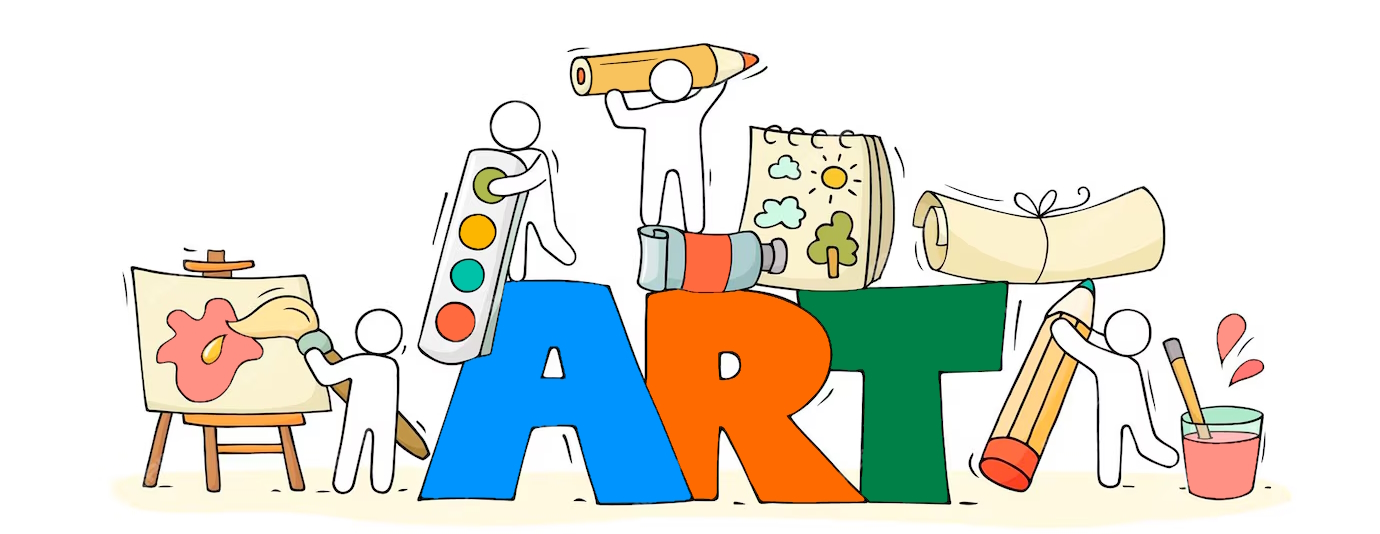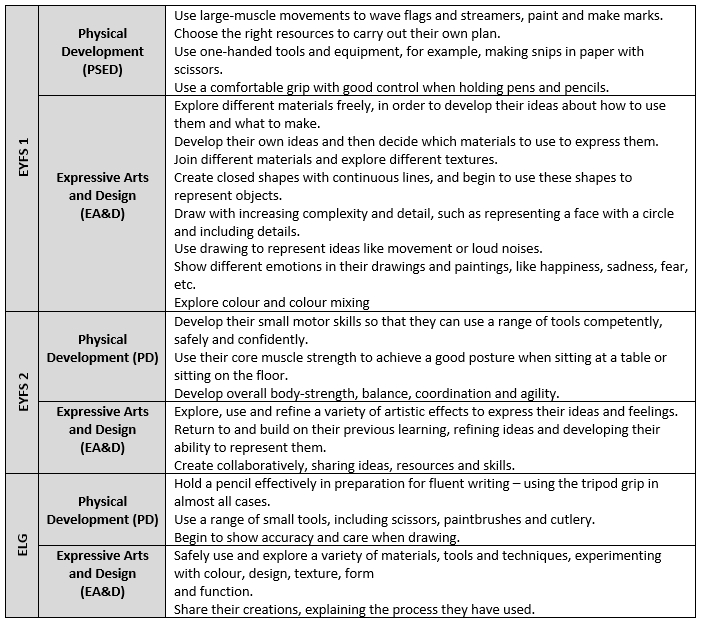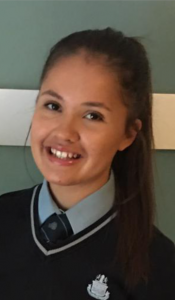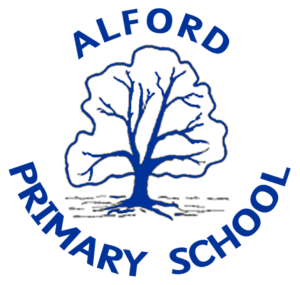
What the National Curriculum requires pupils to be taught in Art in KS1:
- to use a range of materials creatively to design and make products.
- to use drawing, painting and sculpture to develop and share their ideas, experiences and imagination.
- to develop a wide range of art and design techniques in using colour, pattern, texture, line, shape, form and space.
- about the work of a range of artists, craft makers and designers, describing the differences and similarities between different practices and disciplines, and making links to their own work.
What the National Curriculum requires pupils to be taught in Art in Key Stage 2:
Pupils will develop their techniques, including their control and their use of materials, with creativity, experimentation and an increasing awareness of different kinds of art, craft and design.
Pupils should be taught:
- to create sketch books to record their observations and use them to review and revisit ideas.
- to improve their mastery of art and design techniques, including drawing, painting and sculpture with a range of materials [for example, pencil, charcoal, paint, clay].
- about great artists, architects and designers in history.
EYFS: The EYFS framework is structured very differently to the National Curriculum as it is organised across seven areas of learning rather than specific subject areas. Our EYFS Curriculum has been designed to meet the requirements of the educational programmes in the EYFS Statutory Framework (2021). This is outlined in our unique Curriculum Overview (see Long Term Plan). The Development Matters (2020) guidance offers a top-view of how children develop and learn. The table below sets out the Art developmental pathways in broad ages and stages - Three and Four-Year-Olds (EYFS 1), Reception (EYFS 2) and Early Learning Goals. These pathways have been selected as a ‘best-fit’ match to the programme of study for Art, and are key building blocks for children as they transfer their learning to the National Curriculum. The most relevant pathways for Art are taken from the following areas of learning – Physical Development and Expressive Arts and Design.
Intent
We have an ambitious art curriculum at Alford Primary School as we follow the national curriculum. Our Art curriculum allows our children to express their creativity. We teach the knowledge they need to know which equips them with the knowledge and skills to experiment, invent and create their own works of art and design. As pupils progress, they become analytical, develop their own style and identity and use art as a form of expression through the art experiences we provide. With the support of our enriched KEC curriculum and exciting ‘hooks’ we enable children to make connections with other subjects which deepens their knowledge and understanding.
Our art and design curriculum inspires and challenges our pupils. The art and design units promote experimentation, invention and creativity. We look at a range of influential artists and designers. This develops pupils’ knowledge and skills. We develop lifelong artists through our key drivers:
- Using sketch books to reflect on and adapt designs
- Broadening thoughts and opinions of artistic interpretation
- Using different mediums to convey texture, line, shape and tone.
Pupils develop a greater understanding of artistic skills throughout the primary phase. Pupils explore the many forms of art and creativity. They explore sculpture, painting and colour mixing, shading techniques and the use of texture and colour for example.
Pupils also learn about influential people who have affected the art and design world. These may be architects, artists or designers. By learning about these people, we aim to inspire pupils. As a result, we encourage pupils to express themselves and understand how art is applied to the real world. We study a range of artists and designers; learning about the artistic techniques that they use and influences on and from their work. Pupils take inspiration from this to create their own compositions.
Whole School Overview of Art Units
More details about what children will learn during each unit of work can be found by clicking on the links below:






